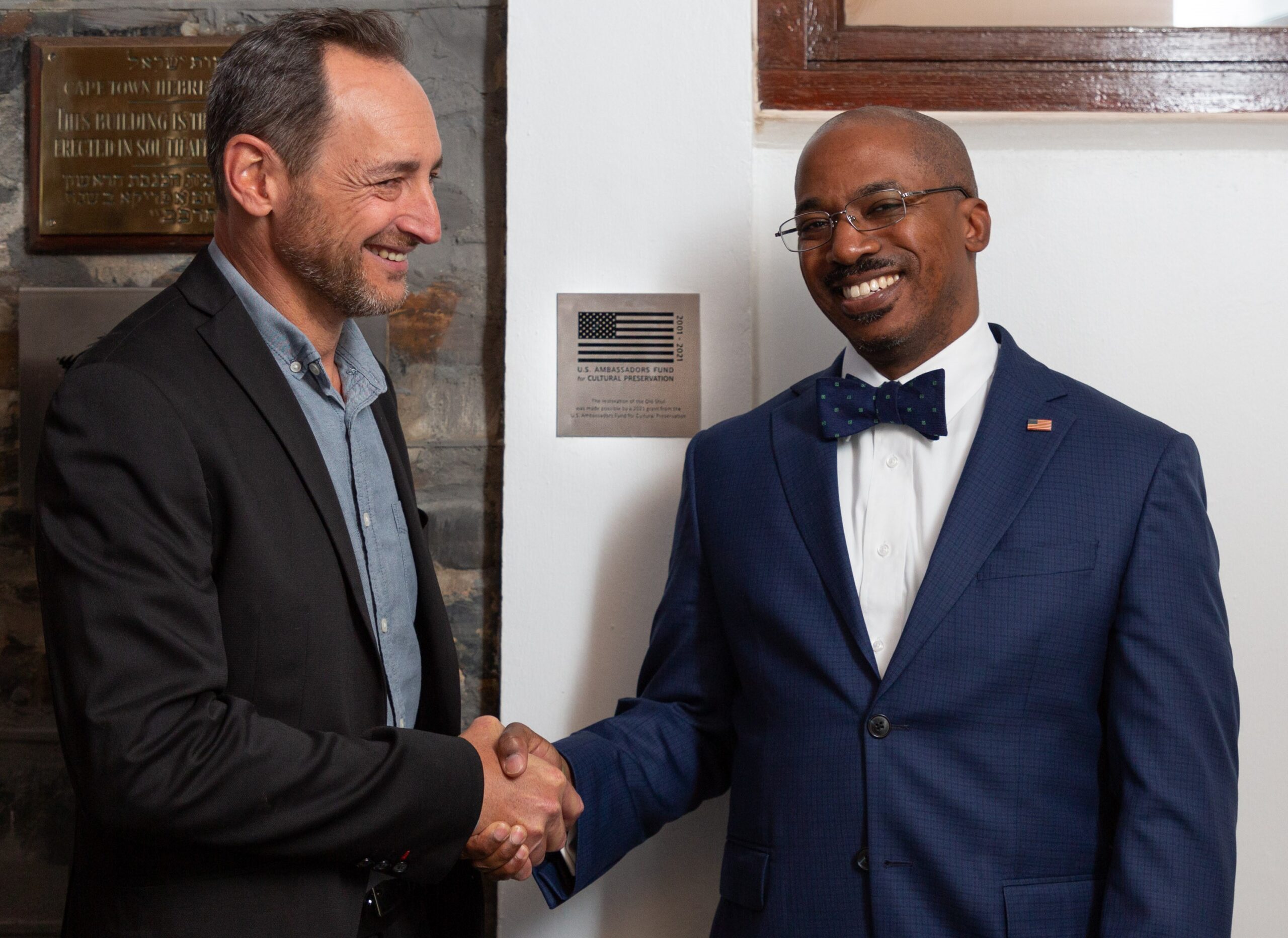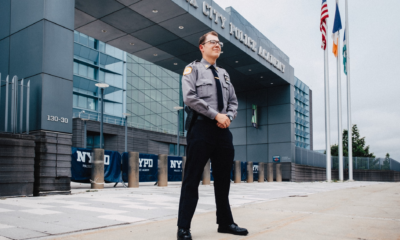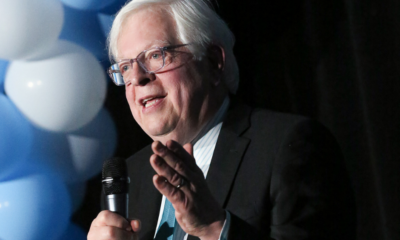
Community

US government funds restoration of SA’s oldest shul
The United States government was behind the restoration of the “oldest physical representation of Jewish life in South Africa”, known as the “Old Shul’” which forms part of the South African Jewish Museum (SAJM) in Cape Town.
“Preserving the story of the first Jewish South Africans, the very first synagogue built in Sub-Saharan Africa, and the community that depended on it provides a view of history that illuminates the diversity of the South African people,” US Ambassador to South Africa Reuben E. Brigety II said at the reopening of the shul on 24 May. “The story educates us all, and, more importantly, corrects false narratives about peoples and nations and the value of diversity.”
The US Ambassador’s Fund for Cultural Preservation (AFCP) provided a grant to restore the St John’s Street Synagogue or Old Shul. Ambassador Brigety was the guest of honour at the reopening of the shul.
The event celebrated the AFCP grant to support the restoration project, and was the official public reopening of this historic 160-year-old South African cultural heritage site. “Apart from gravestones, it’s the oldest physical representation of Jewish life in South Africa,” said SAJM Director Gavin Morris.
“The AFCP grant is a US state department-funded programme designed to ensure the maintenance of places of international cultural significance and to promote the values of diversity, equity, inclusion, and accessibility in US foreign policy and international relations,” said Morris. “Of 172 proposals received globally in 2021, the Old Shul was among only 32 projects selected that year.
“The Old Shul, consecrated in 1863, is the first purpose-built and oldest existing synagogue in Sub-Saharan Africa, and symbolises the nascent South African Jewish community’s desire and commitment to set down roots and build a future in South Africa,” he said. “It also serves as the entrance to the SAJM. The building is architecturally unique, and in 2021, it became the recipient of the grant, valued at more than R1.2 million.”
Said Morris, “On 13 September 1863, a few months shy of 160 years ago, the then-rabbi to the Cape Town Hebrew Congregation (CTHC), Rev Joel Rabinowitz, led his congregants in and officially consecrated the synagogue. A choir burst into song as the congregation’s two Torah scrolls were placed into the ark.”
Morris then called on Rabbi Osher Feldman, the current rabbi of the CTHC (also known as the Gardens Shul), to reinstall the Old Shul’s mezuzah. This was followed by the Gardens Shul choir performing Ma Tovu Ohalecha – the same song that was sung that Sunday afternoon 160 years ago.
The shul closed in 1905, and later became the site of the original Jewish Museum in Cape Town, which opened on 3 August 1958. “Towards the end of the 1990s, the late Mendel Kaplan approached the South African Jewish Board of Deputies and the CTHC with a vision for a new, modern, Jewish museum,” said Morris. “The Old Shul began its third life as the entrance to the new museum. In December 2000, Mendel led the guest of honour, Nelson Mandela, into the Old Shul at the opening of the brand new SAJM.
“There was a tremendous amount of work done to restore the building,” he said. “The Old Shul was built above underground streams, and water has been its constant enemy. The entire floor had to be lifted as we found a huge amount of damp underneath it.
“At some point, concrete had been laid down under the timber. This had to be chopped up and carried away. We had to waterproof the entire substrate and then re-lay the original floorboards which we had sanded and cleaned.
“The marble Ten Commandments that stand above the entrance were held in place by crumbling mortar and would have fallen off the building had we not found this out. We restored the original timber windows, in some cases having to remake window frames where the wood had rotted.
“Thanks to the US Mission to South Africa, this beautiful old lady has been restored to her youthful beauty and new generations, Jewish and non-Jewish alike, will have the opportunity to visit and learn here.
“This restoration and the associated public educational programmes supported by the grant enables the SAJM to continue educating youth and the public about values of tolerance, human rights, and dignity.”
Speaking at the reopening of the shul on 24 May, Ambassador Brigety said he wanted to answer three questions: What have we done? How have we done it? Why have we done it?
“Over the past 20 years, the US Mission to South Africa has supported nearly 20 projects funded by the AFCP, which in total are worth more than R26 million. Getting one of these grants isn’t easy. Every year, more than a hundred cultural institutions around the world apply. But the ambassador and a team of embassy advisors are allowed to select only one, maybe two, to pass on to Washington for final consideration. In D.C., a committee of scholars reviews the applications and selects the winners.
“Why do we do this? For the past 22 years the US government has demonstrated our support for the preservation of cultural heritage around the world. Synagogues and churches have been renovated, languages or traditional art forms are codified and taught to younger generations, artifacts buried under hardened lava or at the bottom of the ocean, are recovered and restored.
“But it’s not about the item we recovered or the space we restored. It’s not about the roof that was repaired. Because when you repair the roof, you don’t just stop a leak, you save a story.” And restoring this shul, the ambassador said, was saving a part of the Jewish South African story.
“Just as we have repaired the roof, not only to stop the rain from destroying the building, but to ensure our humanity and our stories aren’t lost. It’s imperative to repair our world – not just for ourselves, not just for our communities, but for all humanity,” the ambassador said.
“As we do so, we also become more able and more empowered to tell our stories. Stories that speak to the heart of a community; stories that teach us all about each other’s struggles; and stories that are powerful tools in building universal appreciation of all cultures and universal acceptance of everyone’s human rights. Because it’s not just a roof, it’s our story, and it must be told.”
Said Morris, “The Old Shul may belong to the CTHC, but it’s the museum that’s responsible for its upkeep. We’ll continue to care for the building as long as we’re here. Unfortunately funds are often lacking for necessary maintenance, which requires us to ask donors, foundations, or grants to assist us. We’ll continue to look after our communal heritage and tell our community’s story.”










